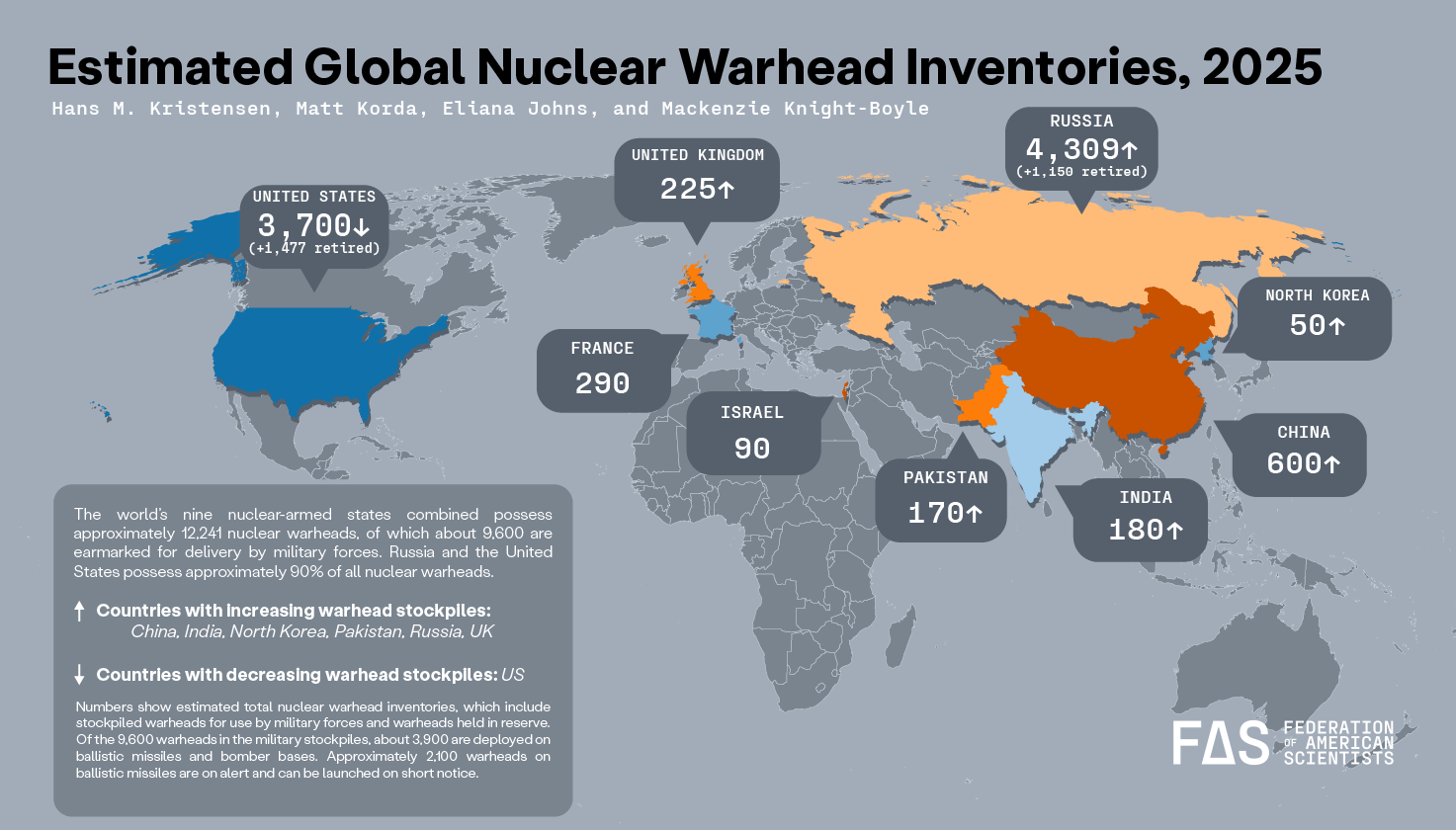
Over the past eight decades, the world has come a long way from the creation of the first nuclear warheads to the formation of a multi-level global deterrence system based on nuclear balance. According to an analysis conducted by the Experts Club information and analytical center based on statistics from the Federation of American Scientists (FAS), the most rapid growth in the number of nuclear weapons occurred between 1945 and 1986. After the first atomic bombs were tested in the US in 1945, the Soviet Union joined the race, and by the 1950s, an arms race had begun, in which the US had the upper hand in the early stages, with over 3,000 warheads.

This period was marked by global confrontation within the framework of the Cold War, an arms race, and the active expansion of the nuclear club.
In the 1960s, the USSR gradually caught up with the US in terms of numbers and eventually surpassed it. The race peaked in 1986, when the total number of nuclear warheads in the world reached a record high of almost 70,000, of which more than 40,000 belonged to the Soviet Union.
After the end of the Cold War in the 1990s, the US and Russia initiated a large-scale reduction of their arsenals, removing some of the warheads from combat duty or disposing of them in accordance with international agreements. By 2023, the total number of nuclear warheads in the world had decreased to approximately 12,500, of which about 9,600 are active, while the rest are in reserve or awaiting dismantlement.
Today, there are nine countries in the world that officially possess nuclear weapons. The largest arsenals are held by Russia (5,889 units) and the United States (5,244 units). China is actively building up its nuclear capabilities and already has about 410 warheads. France and the United Kingdom have 290 and 225 units, respectively. India and Pakistan have about 170 and 165 warheads, respectively, and Israel has an estimated 90. North Korea is estimated to have up to 30 warheads, but its potential is considered highly uncertain due to the country’s secrecy. South Africa is a special case, as it is the only country that voluntarily renounced nuclear weapons, completely dismantling its arsenal in the 1990s.
“The dynamics of change in nuclear capabilities demonstrate the extraordinary flexibility and, at the same time, vulnerability of the global security system. For many years, nuclear weapons have been not only an element of deterrence but also an instrument of political blackmail, allowing individual states to influence the international agenda. Today, we are seeing an alarming trend: despite the overall reduction in stockpiles in leading countries such as the US and Russia, certain countries — primarily China and North Korea — are demonstrating growing ambitions, indicating a potential return to the arms race. And if the international community fails to develop effective control and limitation mechanisms, we risk facing a new phase of nuclear confrontation, which will be even more dangerous due to the presence of unstable regimes, technological breakthroughs, and cyber threats,” comments Maxim Urakin, founder of the Experts Club analytical center.
In conclusion, it should be emphasized that the current nuclear security architecture needs to be revised. The conditions of the new geopolitical reality require not only maintaining parity, but also creating international mechanisms capable of preventing the proliferation of nuclear weapons and reducing the risk of their use in new types of conflicts. Without global dialogue, transparency, and trust, the future of global security will remain under threat.
For more information, visit the Experts Club YouTube channel.